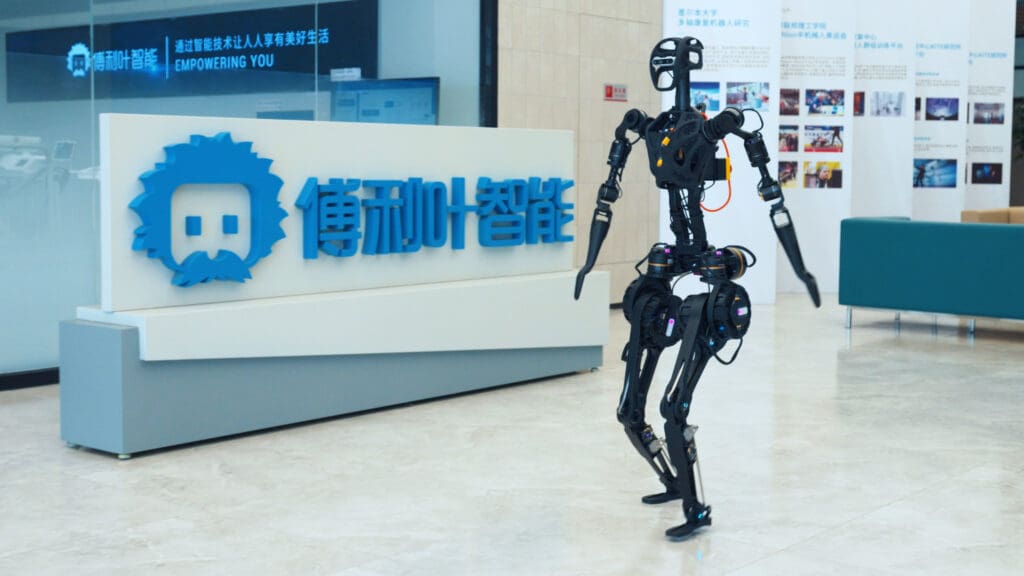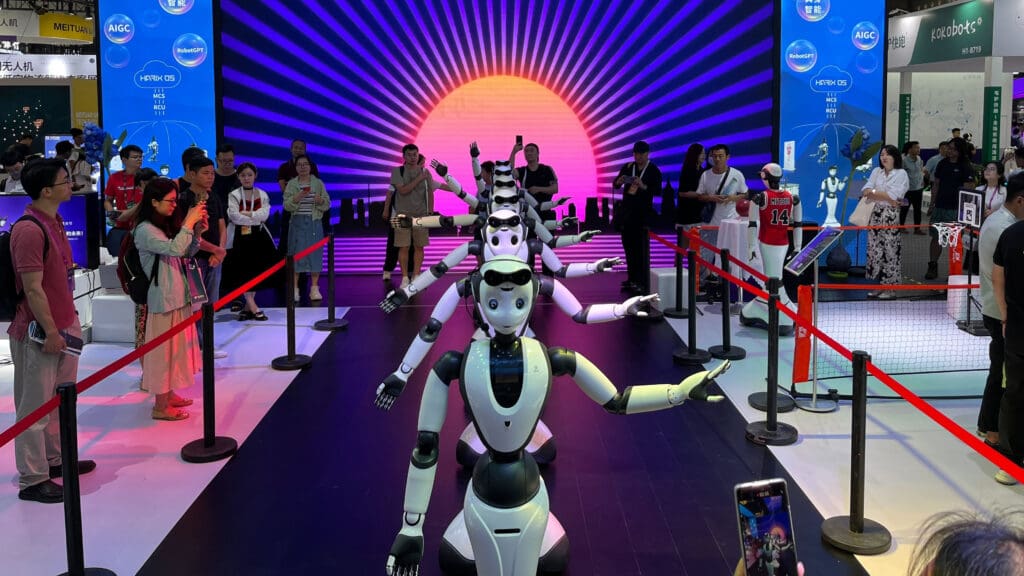
Fourier, a venture firm based in Shanghai, has introduced its AI-powered humanoid robot, the GR-1, at the World Artificial Intelligence Conference in Shanghai.
This Chinese startup, Fourier Intelligence, is breaking new ground in the field of bipedal robots enhanced with AI technology.
With ambitions to begin mass production of the GR-1 robot by the end of 2023, the company from Shanghai plans to distribute thousands of units in the following year. Fourier aims to collaborate with leading AI companies to improve the ‘brain’ of their bipedal invention.

The GR-1 humanoid robot made its first appearance at the World Artificial Intelligence Conference (WAIC) in Shanghai this July.
Since the launch of OpenAI’s ChatGPT last November, the focus of the global tech community has largely shifted to AI software. However, the GR-1, weighing 55 kg and capable of moving at a speed of 5 km/h, also emphasizes the potential of humanoid robots as a unique venture.
“Our team has embarked on a pioneering journey. We faced a lack of historical examples to follow,” said Alex Gu, Fourier’s founder and CEO, in a conversation with the South China Morning Post. He also suggested that these robots developed in China could serve the country’s aging population.
Gu mentioned, “The technology used in rehabilitative robots is very much applicable to humanoid robots. These robots require high-quality, lightweight motors, and we have the expertise to develop them.”

“Seeing it stand and start walking on its own was a huge morale booster for our engineering team, like watching a child’s first steps,” he added.
Following this, Fourier shared a video clip of the GR-1 moving, which garnered significant praise but also skepticism.
“Some viewers speculated that the video was digitally altered,” Gu revealed.
Experts in the robotics field warn that commercializing humanoid robots for a broader consumer base presents significant challenges.
“Currently, humanoid robots are mainly found in research labs and are quite expensive. A high-end model could cost millions of yuan,” stated Zhang Xiaorong, the head of China’s Shendu Technology research institute.
You may also like this content
- Is GTA 6 Proof We’re Living in a Simulation?
- The Metaverse in 2040: A Trajectory of Hype, Hope, and the Human Condition
- What Happened to NFT and Metaverse Land Buyers?
Follow us on TWITTER (X) and be instantly informed about the latest developments…











